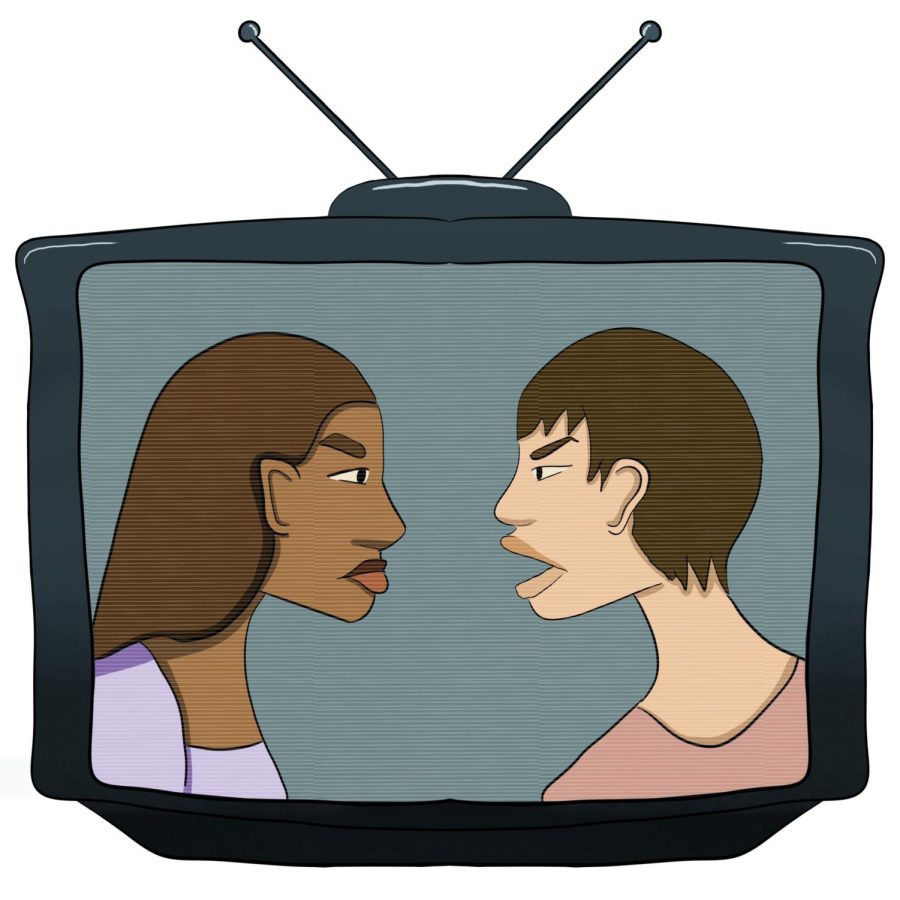Opinion | Representation is not romanticization
February 9, 2023
Mental illness is not pretty, and relationships don’t always end perfectly. Women aren’t always sweet and can be cynical. If this is true, then why is it dangerous when characters possess these traits? I want to look at three pieces of media that have been unfairly criticized for romanticization of various traumas.
“Normal People,” written by Sally Rooney, follows Marianne and Connell as they struggle through high school and university. The novel shows their romance but also covers dark topics like domestic abuse and suicide. Their relationship is messy because both of the characters have their own issues that show through in many aspects of their lives.
The show “Fleabag,” written by Phoebe Waller-Bridge, follows an unnamed narrator as she copes with the grief of losing her best friend and deals with family issues. She is awkward and uncomfortable but breaks the fourth wall for conveying her misplaced confidence.“Fleabag” is criticized as dangerous for feminism because its main character rejects the current feminist girlboss ideology.
Otessa Moshfegh’s “My Year of Rest and Relaxation” is a satire that discusses class and the effects of capitalism on society. Its unnamed main character grew up in a wealthy family in New York City. Her father is cold and her mother committed suicide. The narrator decides to enter a drug induced hibernation to delay the downward spiral of her life.This novel has been criticized for romanticizing rich white girl problems and its annoyingly privileged main character.
All three of these works have a few things in common. They are written by women and feature female characters that are generally unlikeable. They all experience great amounts of trauma and the stories exist for exploring the ways that it manifests in their lives. They are all put into the category of dissociative feminism, a movement for women who have lost faith in modern feminism. The female protagonists are not feminists and have no real direction in their lives. The point is that the audience can still see issues affecting them — whether they are societal or spawned — from their own traumas, but the characters choose ignorance.
Putting these works under the same category already minimizes the uniqueness and nuance that exists within each one, but the issue is worsened when they are all labeled as “dangerous.”
Just because these characters are making bad decisions in terms of their own mental health, it doesn’t mean that these works encourage self-destructive behavior for their audiences. Mental health representation is a phrase that I see thrown around, but when earnest attempts are made, some audiences will find reasons why showing mental illness is dangerous and invalid. This criticism has nothing to do with the value of the media.
While these works are called out for being toxic, they pale when compared with works created by male authors that represent abusive male characters. These stories are still taught as classic literature in American high schools.
Although the works of Moshfegh, Rooney and Waller-Bridge are recognized for their artistic value, some believe that they could endanger the general audience. Critics can not only lack trust in the creators, but the audience’s ability to comprehend complex material.
Moshfegh’s protagonist doesn’t exist for promoting rude women and outrageous wealth. It is a piece of satire that shows how wealth and capitalism can make people cruel and cold. Even though Fleabag is rude and not a feminist, it doesn’t mean that Waller-Bridge is advocating for the reversal of feminism and the longevity of the patriarchy. Marianne doesn’t reject advances from men because she is bitter and wallowing in self pity — it’s because she is continuously abused by her family and doesn’t know how to let someone love her.
None of these works are perfect. Rooney writes in a specific style that can easily put off some readers. She also mentions current events, particularly the conflict in Palestine, in an almost cliche way, like she wanted her characters to feel smart for having an opinion. Moshfegh’s protagonist says something disgusting about the people around her, which is enough to put off a reader, though the author is not condoning that behavior. Putting down works because they could damage the reader makes it more difficult to create criticism that trusts the work.
When these works are shot down because some audiences can’t recognize the difference between romanticization and representation it hurts the potential for these stories. People shouldn’t avoid them merely because their main characters are mentally ill and they don’t only show the pretty side. Calling these works dangerous is a slap in the face to female creators who are artfully representing their own experiences.
When we expect women artists to constantly create in the category of good feminist media with strong and successful women at the forefront, we limit their artistic potential.
Jameson Keebler writes primarily about pop culture and current events. Write to her at [email protected].









